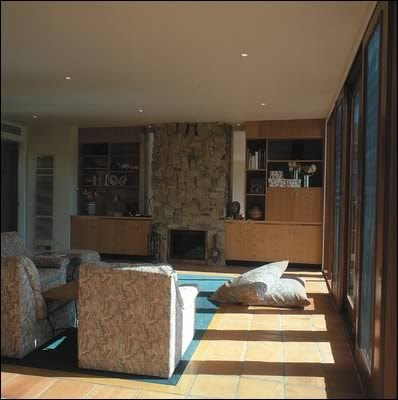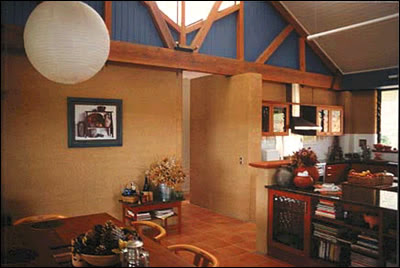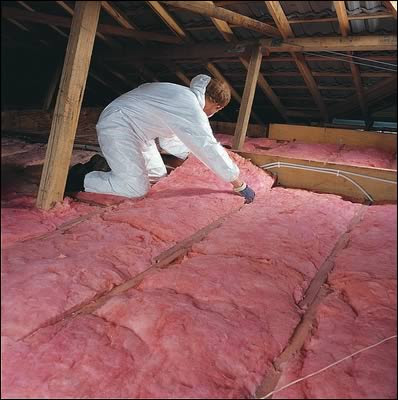Energy Efficient House Design
Features of this Low Energy House Design
- The long axis of the house runs east to west so that a large area of glazing can be provided on the north wall.
- Minimum glazing on east and south walls and no glazing on the west wall.
- North facing windows protected in summer by shade battens or deciduous vines on pergola.
- Concrete slab-on-ground with edge beam insulation - acts as a heat sink in summer and a heat store in winter.
- Dark ceramic or quarry tiles on floors in living areas.
- Dense evergreen planting next to the west wall to provide shade against the hot summer sun and a wind barrier against cold winter winds.
- Front door protected from prevailing south westerly winds in winter.
- Carport on south side creates a pocket of cooler air for summer cross ventilation.
- Metal deck roof with R3.5 batts on ceiling and R1.5 blanket with double sided reflective foil laminate insulation under roofing. The 3 most important concepts are
1. Glass
- An energy efficient house has larger windows facing north to capture the Sun's free solar energy.
- North facing windows are the most important in your home. They can gain more heat during the day than they lose at night and make your home bright and cheerful.
- Design them to admit sun’s warmth in Winter.
- Appropriate width eaves can reduce overheating in Summer
- South facing windows are also important but not from a heating point of view.
- They are useful for admitting natural light and to allow cross ventilation during summer.
2. Mass
Have plenty of mass to absorb and store the Sun's energy for use when the sun isn't shining!3. Insulation
Once your home is cosy and warm, adequate insulation will keep the heat from escaping.
Other sources of information
Hobart City CouncilYour Home ( A joint initiative of the Australian Government and the design and construction industries. )








